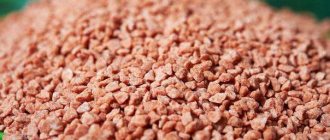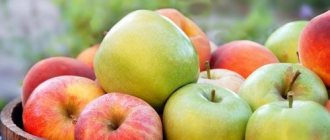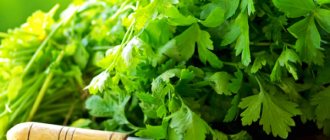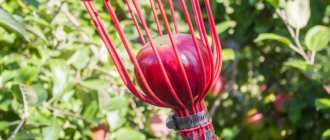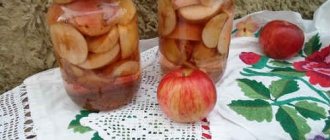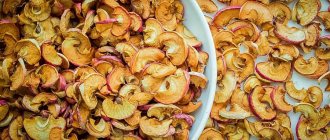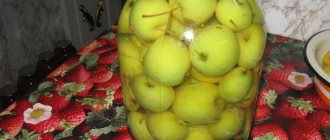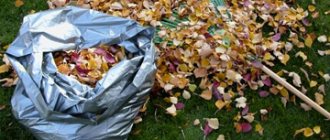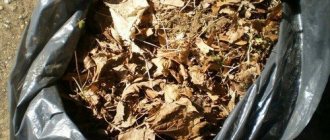Why does carrion form?
Unripe fruits fall to the ground as a result of strong winds, hail, or damage to the stems and core by pests. If the tree is not tall, then the fruits do not break and can be eaten. Broken fruits are collected and processed urgently, before rotting processes begin and most of the pulp is in good condition.
Video: Carrion - how to make fertilizer correctly
Rotten fruits that have lain on the ground for several days cannot be processed. This is the kind of raw material we will talk about. During decay, bacterial and mold spores multiply on them, but they do not always cause soil contamination. If you use carrion apples correctly, the fertilizer will be safe.
Carrion: to use or not
Apples are a product rich in many substances beneficial to humans. It is safe to say that if a fruit is useful to a person, then it is also useful to the plant on which it ripens. The only question is how and in what form these fruits should be used to improve the composition of the soil and increase the yield of fruit trees and other agricultural crops.
Scientists have found a lot of iron, potassium, calcium, sodium, phosphorus, chlorine, and manganese in apples. It's impossible to list everything. And the lands used often lack one or another element.
Apples that fall from a tree are called carrion. Fruits fall for various reasons. This could be: strong wind, hail, drought. And then the fruits are actually not infected with anything. But it happens that a sick fetus also falls. In autumn there is especially a lot of carrion - this is a harvest that was not harvested on time. For gardeners, carrion is a subject of concern and numerous questions about how to dispose of it profitably.
As a rule, fallen apples are infected with moth larvae. There are many other diseases. And although the chemical composition of the fruits actually remains the same, it is not recommended to use such rotting raw materials without pre-treatment to prepare fertilizer. The simplest and most reliable method of processing is a compost heap
Organics from fruits
Organic fertilizer is beneficial not only for plants, but also for the soil. When released into the soil, fiber provides a breeding ground for microorganisms that enrich the soil with humus. At the same time, the fertile layer increases, and the soil itself becomes loose and holds water better. Nutrients made by nature are quickly absorbed by plants.
Organic matter is most often added in the fall:
- When a large amount of waste accumulates on the farm.
- There is time for it to rot in the ground. By spring, bacteria have time to process plant residues and cellulose.
You can make a prefabricated organic fertilizer by adding rotten apples to compost. To do this, you need to build a compost heap and lay it correctly so that the amount of carbon-containing substances is 4 times greater than the amount of nitrogen.
Apple carrion is used as a fertilizer in liquid form or simply crushed. You need to choose a method yourself, based on the amount of raw materials, availability of time and effort.
One thing is clear: you cannot leave rotten fruit on the ground in the garden. Next year, an epidemic of fungal diseases may occur and the harvest of vegetable crops such as tomatoes, cucumbers, and potatoes will have to be saved with chemicals.
Carrion as fertilizer
Fallen and spoiled fruits can be used as organic fertilizer for other crops. Due to the presence of various microelements, after complete decomposition, they will not only improve the quality of the soil, but also help to obtain a bountiful harvest. At the same time, carrion can be applied both to fruit and berry crops and to vegetable and ornamental crops.
Experienced gardeners and gardeners practice two methods of using rotten apples as fertilizer:
- direct application of fruits to the soil;
- use as a component for compost.
Composting apple carrion
To kill fungal spores, rotten apples can be placed in compost only if it is well ventilated. In other words, for processing by aerobic microorganisms. For this purpose, the pile is made semi-open, with slots and a door, so that it is convenient to periodically loosen the contents of the compost heap.
To speed up composting, all layers are watered with biological fertilizer when laying in order to increase the number of bacteria at the initial stage. With good access to oxygen, reproduction will proceed quickly and organic matter will turn into humus within 2 to 3 months. It is better to chop large fruits with a shovel or put them through a chopper.
It is important that the temperature in the compost pit rises to 70 degrees. This will kill pathogenic flora and make the compost safe. The amount of nitrogen components must correspond to the norm. Rotten apples belong to nitrogen elements, so straw, dry leaves, soil or peat are used together with them. To speed up combustion, you can add manure in the form of a thin layer.
The simplest recipe is to sprinkle the layers of carrion with soil. You can put rotten apples in the compost as they appear, so that the nutrient liquid does not go into the ground and attract pests. It will take longer for humus from carrion apples to ripen, but there will be more of it, because all the raw materials will end up in the compost pit.
Liquid compost
It may happen that you do not have rotted compost before planting. But since the fall, fallen fruits of apples, pears, and plums have remained in the grass. There is a good method for preparing nutritious fertilizer from this raw material for almost all types of garden plants and flowers. All carrion, along with freshly cut grass, should be placed in any container at hand. Most often, a barrel is used for these purposes. The container is filled with water to about 2/3 of the volume and closed with a lid. The fermentation process begins, which will last approximately 10 days. It is better to place the barrel in a sunny place so that fermentation is more active. After 10 days, you have a nutrient-rich fertilizer at your disposal.
Anyone who has ever raised mullein for feeding knows that you need to take 1 liter of solution per bucket of water. The fertilizer you prepared is diluted in the same way.
It should be noted that the smell emanating from the barrel is very unpleasant. To weaken it, you can add a few drops of valerian to the solution.
Never leave fallen fruit unattended. Properly made organic fertilizing from carrion is an invaluable assistant in growing a rich harvest.
The compost heap includes almost all organic waste. People in villages often say that the earth absorbs everything that it once gave to people. The carrion will no doubt find its rightful place there.
Making liquid fertilizer from rotten apples
You can put carrion apples into compost in another way - liquid. To do this, the raw materials are crushed and poured into a large plastic barrel. The essence of the method is to allow fruits flooded with water to begin to ferment. The smell released is not pleasant, but the liquid is so nutritious that it must be diluted in the same way as slurry.
Cooking method:
- A third or half of the barrel is filled with rotting waste.
- Fill with water, leaving 20 cm on top for fermentation.
- Place it in the sun to speed up the process.
- After 2 weeks , the liquid is diluted and the plants in the garden are watered.
The remaining fiber is added dropwise in the garden or between the rows.
What does this fertilizer contain?
Apples, including fallen ones, are rich in potassium, magnesium, phosphorus, and manganese. To enrich the composition with nitrogen, you can add dandelion or grass to the compost. And if you need to saturate the soil with carbon, you should add paper, straw or tree bark.
These products easily come into contact with water, air and heat, resulting in more active decomposition of organic matter.
It should be noted that apples have a high acid content, which means they can increase the acidity of the soil. To prevent this from happening, before composting you need to mix the crushed fruits with soda: for 1 kg of carrion you will need 10 g.
Dry method of recycling carrion in the ground
The easiest way to use apples as soil fertilizer is in dry form. To do this, they are collected and sorted so that mold does not get into the soil. Next, it is crushed and this substrate is applied under berry bushes, around trees in depressions in the ground, then sprinkled with soil. You can add some manure and dry leaves. Urea is sprinkled on top to prevent fungi and pathogenic bacteria from developing.
Fallen fruits what to do
What to do with fallen apples? What to do to avoid infecting the earth with carrion diseases? Is it possible not to collect them? Will they naturally act as fertilizer? How to recycle carrion?
Apples need to be picked. And as often as possible. It is advisable to even shake the trees slightly to speed up the fall of wormy fruits. The fact is that the worm moves from the affected fruit to the tree and crawls into a healthy apple. And the codling moth larva pupates in the tree bark for the winter. Carrion is an “incubator” of diseases. You can’t just leave it on the ground if you want to have good harvests in the future. But it is even recommended to process it and then use it as fertilizer.
Many people believe that by collecting carrion in compost heaps, the entire compost can be contaminated. If you do it illiterately, then this can happen. And if you follow certain rules, the compost will be very nutritious.
Apple tree moniliosis in spring
With the onset of spring, the marsupial stage of the fungus begins , active sporulation and dispersal, which occurs during the blooming of young leaves and flowers. They get overwhelmed quickly.
Petals and pistils turn brown and fall off, leaves curl and dry out.
Damage to inflorescences by monilial burn can completely destroy the crop.
It is important to take timely measures to reduce the risk of fungal development and spread. Prevention is better than the task of how to cure an apple tree from fruit rot.
Preventive control of apple tree moniliosis:
- In early spring inspect the plants , remove dried branches, trim thickened crowns, clean off exfoliated bark and lichens, cover damaged areas with soda water or paint, whitewash the trunk and large branches with lime mortar.
- Apply phosphorus and potassium fertilizers , remove last year's garbage and plant debris, and dig up the soil near the trees. Young apple trees can be watered 2-3 times with preparations that stimulate the strengthening of the root system (root growth, heteroauxin) at the rate of 5-10 liters per plant.
- Water and maintain constant soil moisture.
- Carry out chemical treatment against pests and diseases that contribute to the development of moniliosis. The industry offers a wide range of drugs with detailed instructions for use.
Phosphate fertilizers. Attention! It is necessary to strictly monitor the consumption rates of chemicals and observe safety measures.
If apples rot on an apple tree, what should you do?
Spores are colonized through areas with cracks, pricks from branches, damaged by pests and diseases. Rotten apples appear on an apple tree, and every gardener needs to know exactly what to do about it.
Prevention of the disease during the fruiting period includes the following measures:
- Timely removal of weeds;
- Constant cleaning of carrion , removal of damaged fruits and their disposal;
- Pruning drying branches, leaves, bark;
- Continue chemical protection (the last treatment is carried out 30 days before harvesting);
- Remove all apples from the tree, preventing them from overwintering on the apple tree.
- Treat the trunk circles of infected plants after harvesting with copper sulfate (60g) or “Hom” (80g) per 10 liters of water.
- Apply fertilizer and dig up the soil for the winter.
Burn affected branches and fallen fruit.
Important! All fruits, plants and garbage affected by the disease are burned or buried in holes to a depth of more than 50 cm outside the garden.
They are not suitable for use for composting, because... they have apple tree fruit rot; treatment consists of destroying the affected parts.
Professional agronomists have answers on how to successfully treat apple moniliosis and win. Now you also have the knowledge of how to deal with fruit rot on apple trees.
Methods of controlling diseases and pests
Plum fruits rot on the tree - what to do and possible causes
Below you can find out the most effective ways to combat apple tree diseases and pests that lead to crop rot and fruit falling.
Folk remedies
Traditional methods are quite effective if you start treatment at the very beginning of a tree becoming infected. The most effective way to deal with diseases and pests is by:
- Urea solution. Helps cope with moniliosis at an early stage. To spray several mature trees, you will need to dilute 650 g of urea in 30 liters of settled rainwater. To increase the stickiness level, you can add a few tablespoons of dish soap. All components are thoroughly mixed. During processing, it is important to wet the leaf plates on both sides. The branches of the fruit crop should also get wet. The area around the trunk circle is covered with a layer of straw 7-8 cm thick. Straw mulch will make it possible to preserve pathogens in the soil that did not have time to die during processing. With the onset of spring, until the period of sap flow begins, it will be necessary to repeat the treatment with a urea solution.
- Red pepper and onion peels, which will help fight the invasion of aphids and caterpillars. To prepare the solution, you need to add 150 g of red pepper and 300 g of onion peels to 15 liters of water. Thanks to the treatment, the plants will remain healthy, and the apples will be beautiful and will not burst.
- Wormwood, which allows you to cope with codling moths. To prepare the decoction, you will need to bring 550 g of wormwood to a boil, combined with settled water (2.5 l). After the broth has cooled, it is necessary to spray the trees. Repeated treatment of plants is carried out after 12-14 days.
- Mustard solution to cope with fungal diseases. To prepare the solution, you will need to add 180-190 g of mustard powder to 20 liters of water. The components are thoroughly mixed. The resulting liquid must be sprayed onto the apple trees and watered generously. Repeated treatment is carried out after 10 days. Experts recommend spraying fruit plants with mustard solution in late spring and mid-June for preventive purposes.
To cope with moniliosis, you can use a urea solution
Spraying with specialized products
To prevent apple trees from being affected by fruit rot, experienced gardeners recommend treating fruit trees in the spring months until the buds begin to bloom. It is best to use products for spraying that contain:
- copper oxychloride;
- copper sulfate.
Preventative treatment is also carried out in the autumn months, when trees begin to shed their leaves. To save apples on a tree from rotting, it is best to use Bordeaux mixture (3%). If the fruits on the plant have already set, you need to purchase a 1% solution so that the tree does not suffer from burns.
Moniliosis is one of the most dangerous diseases that affects fruit crops and leaves the gardener without a harvest. The infection spreads quickly and recurs. That is why it is important to give preference to an integrated approach in treating plants. Prevention measures must be combined with agricultural practices and treatment using various means. Having found out why apples on an apple tree turn black, you need to start fighting the disease as soon as possible, using:
- biological means;
- chemical;
- fungicidal preparations;
- folk methods.
Biological agents
This category of drugs allows you to destroy the cellular structure of fungi. If a gardener uses a biological product, following the advice specified in the instructions, the product will be absolutely safe for plants and will not have a toxic effect on them. To suppress fungal spores, experienced gardeners recommend using:
- "Mikosan V."
- "Alirin B."
- "Fitosporin M".
Chemicals
The most popular and inexpensive remedy for moniliosis among gardeners is a solution of copper sulfate. An even more effective and proven remedy is Bordeaux mixture, which can be used in the form of a 3% solution before the onset of kidney development, and in other periods in the form of a 1% solution.
Fungicides
To suppress the growth of the fungus and completely destroy it, you can treat plants with fungicidal agents according to the following type:
- "Horus."
- "Abiga-Pika".
- "Soon."
Having prepared a solution with one of the listed preparations, you can begin treating apple trees (in summer or autumn), generously spraying the branches and foliage. Also, a small amount of solution will need to be poured into the tree trunk area, which will make it possible to stop the rotting of the fruits and get rid of fungal spores that develop in the soil.
It is important to use fungicides carefully, strictly adhering to the recommendations specified in the instructions
Note! Treating the tree with a fungicide will help correct the problem and preserve the apple fruits.
Can it be used?
If you use apples as fertilizer, you can increase the yield of other crops on your land. Apples are quickly processed in the ground; within a year there will be no trace of them left.
However, if the apple tree has been affected by diseases - fungal, viral or bacterial, the apples that have fallen from it cannot be used. After harvesting, they need to be removed from the site.
Many land owners refuse this method of increasing soil fertility because they believe that rotten fruit will harm the plants. In fact, all pathogenic microorganisms that are formed during the decay process are destroyed at high temperatures during compost preparation.

